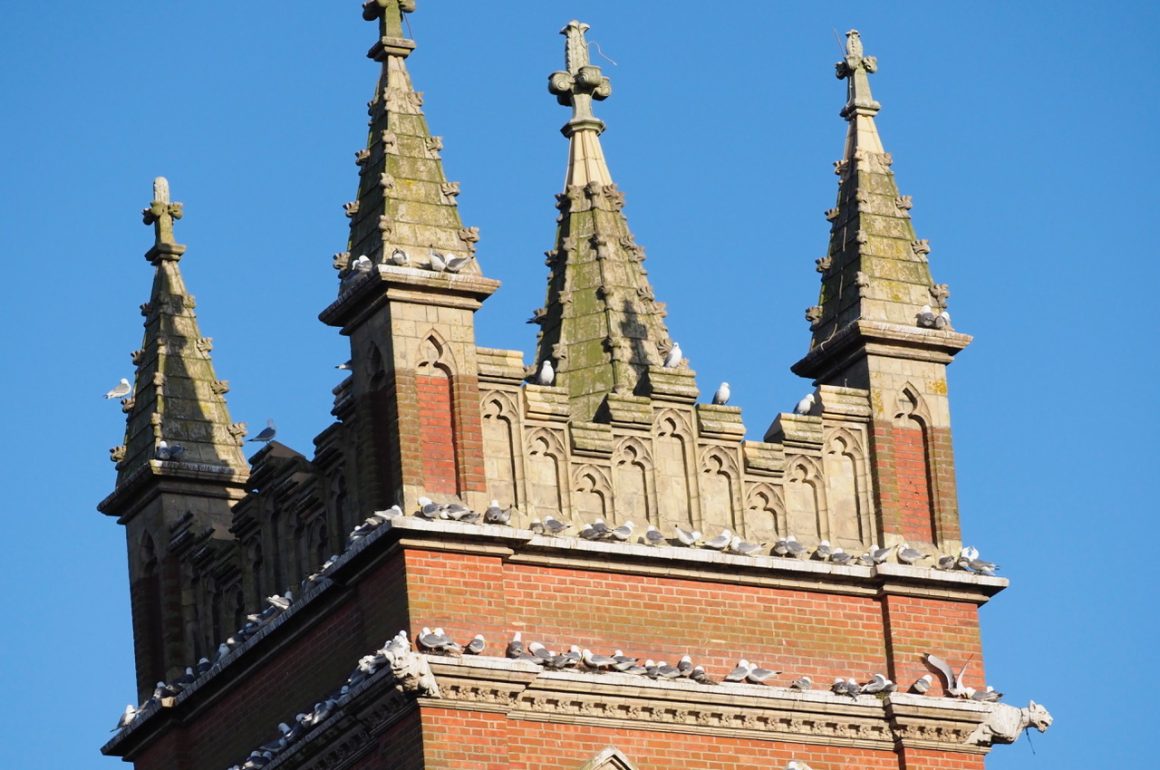
Of all the gulls that occur in Britain, there’s none that is as pelagic as the Kittiwake. It’s a bird that rarely occurs inland, and outside the breeding season it spends its time far out to sea. British-ringed Kittiwakes have been reported many times from Greenland and Newfoundland, and birds in adult plumage are regularly seen in winter in mid-Atlantic.
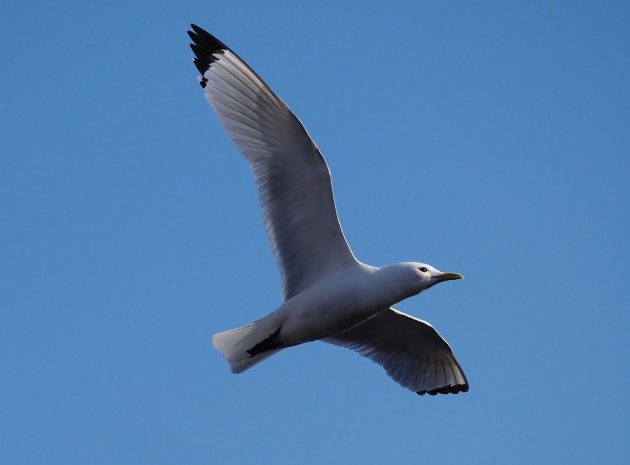
In March, as the days start to lengthen, so the wandering birds return to their breeding cliffs. Most male Kittiwakes return to the colony where they hatched, but only a small minority of females do so, though most will nest relatively close by. Adult pairs are very site faithful, and if their breeding is successful, they will return to the same colony year after year. Whether pairs re-unite after a winter wandering the high seas is apparently unknown, but it wouldn’t be surprising if this was the case.
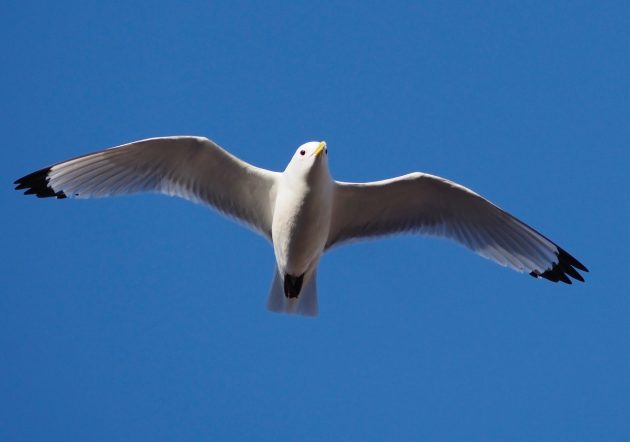
Incidentally, by Kittiwake I’m referring to the Black-legged Kittiwake (Rissa tridactyl). Black-legged kittiwakes are distributed throughout the northern hemisphere, unlike their smaller cousin the Red-legged Kittiwake (Rissa brevirostris), which is a bird of the North Pacific and which hasn’t, as far as I am aware, ever been recorded in Atlantic waters. According to eBird, “it breeds on rocky cliffs on islands in the Bering Sea, from Alaska to Russia; winters on open ocean”. In contrast, eBird notes that the Black-legged Kittiwake “breeds at high latitudes across the Northern Hemisphere, primarily in large colonies on cliffs and other structures overhanging water”.
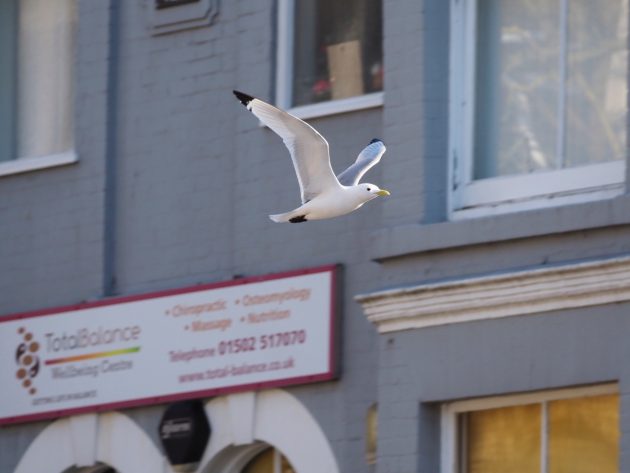
Suffolk’s Kittiwakes don’t follow the rules, for not only are their colonies among the most southerly in the world, but they don’t nest on cliffs, or on structures overhanging water. In fact the biggest Suffolk colony of all is in the town of Lowestoft, with scores of pairs nesting somewhat improbably on the tower of the Roman Catholic Church of Our Lady of the Sea (below). Built in 1902, the architects were George Baines and F. W. Richards. They designed the church to be in the Arts and Crafts style. Of course the last thing that Messrs Baines and Richards would have thought about when they designed it was that one day it would support a flourishing colony of birds of any sort, let alone Kittiwakes.
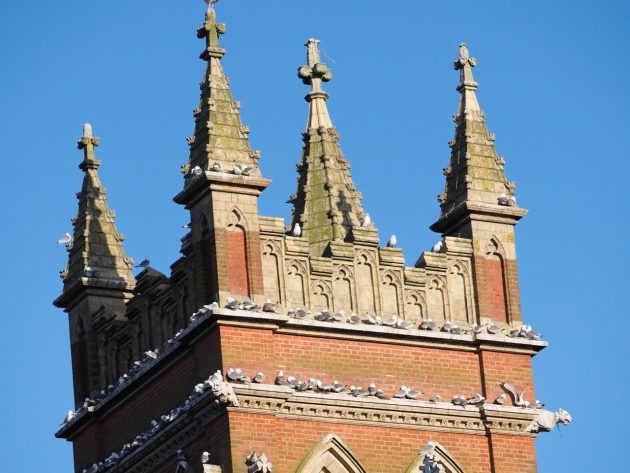
The Catholic Church of Our Lady of the Sea, Lowestoft, Suffolk, festooned with nesting Kittiwakes. (31 March 2024)
The first record of these smart little gulls nesting in Suffolk was in 1958, when two pairs nested on Lowestoft’s South Pier Pavilion. The colony steadily increased, so by 1970, some 32 pairs were present. During the next decade numbers continued to grow, and nesting pairs spread onto buildings in the surrounding harbour area. Kittiwakes are not generally popular neighbours, for during the breeding season they call both incessantly and noisily, and their droppings are not great for the paintwork of cars, either.
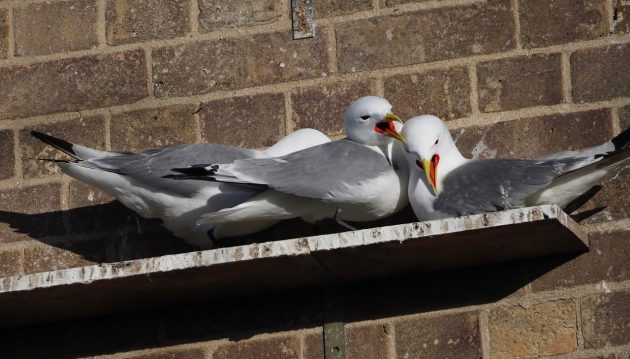
Note the beautiful crimson gapes of these birds
Efforts were made to keep the birds away, with various ways of dissuading them employed, including netting. However, the birds had become a local attraction, so Associated British Ports constructed a pupose-built wall for them. Completed in 1988, it soon proved popular. However, it wasn’t sufficient to accommodate the growing colony, which enjoyed unusually high fledging rates due to the absence of serious predators such as Great Skuas and Great Black-backed Gulls.
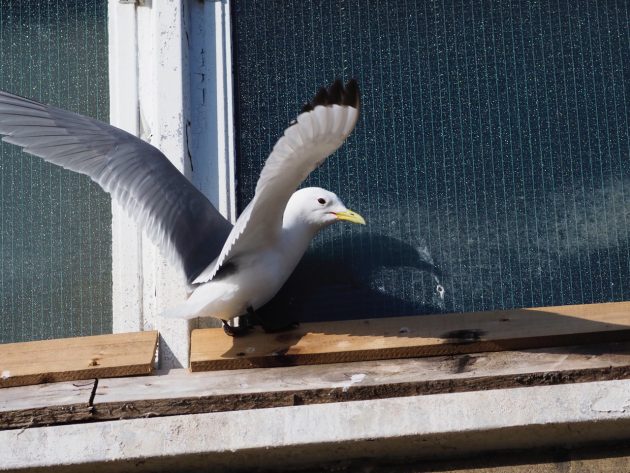
The battle between the Kittiwakes and the locals came to a head in 2021, when BT erected nets to keep the birds off its building on Surrey Street, as did the nearby Pappa John’s Pizza. Several unfortunate Kittiwakes became trapped. The resulting publicity about their deaths hit national headlines: the netting was removed, and BT even erected bird-friendly ledges for the Kittiwakes to nest on. This led to the establishment of the Lowestoft Kittiwake Partnership (set up by the Suffolk Wildlife Trust, together with then RSPB, the council, business groups, community members and with the help of the local MP) which seeks to safeguard nesting birds while reducing conflict with businesses and the owners of buildings in the town.
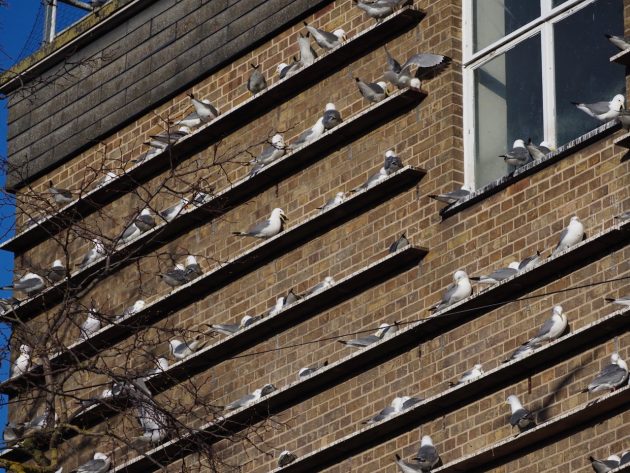
Kittiwakes on their nesting shelves on the BT building. This was the site that was netted in 2021 to keep the nesting gulls away, but under intense pressure from conservationists BT relented and erected the nesting shelves instead
It was thanks to the Kittiwake Partnership that the energy giant Ørsted agreed to build two Kittiwake hotels close offshore at Lowestoft’s South Beach. According to the local paper, the innovative designs were “developed by a team of ornithologists, architects, ecologists and engineers” and the resulting impressive structures have narrow ledges and vertical sides to mimic the cliffs on which the Kittiwakes normally nest. Each tower has the capacity for 500 pairs, while each nesting space is fitted with a sliding Perspex panel, enabling researchers to view the Kittiwakes from inside the structures without the birds being able to see them.
The offshore Kittiwake hotels were only completed last summer, so this is the first year that the birds can move in. Decoy Kittiwakes are being used to lure the birds, and it seems highly likely that the hotels will prove popular.
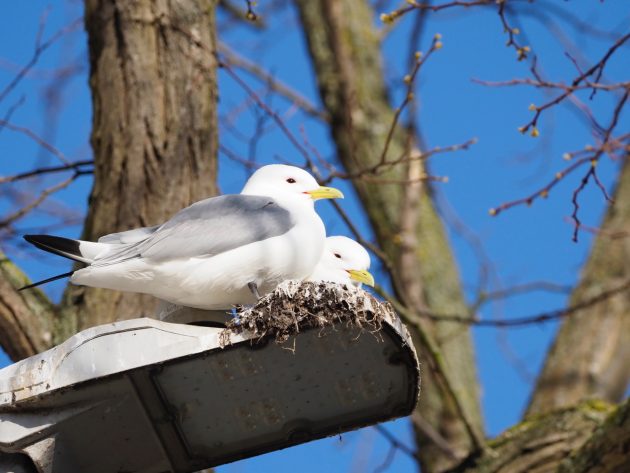
This pair have chosen the top of a lamp post for their nest. Perhaps it keeps them warm at night
However, whether the town birds will ever be persuaded to move is another matter, for as I noted earlier, Kittiwakes are very site faithful. I visited the town colony at the end of March, finding ledges packed with birds, the air filled with their shrill onomatopoeic calls. I didn’t manage to count the numbers present, but my shot of the church shows the birds packed shoulder to shoulder, with little room for late arrivals. The shelves on the BT building were also well occupied, with hardly space for more birds, while every possible nest site nearby, such as the top of lamp-posts (above) was also occupied. I much enjoyed seeing and photographing them, but I have to be honest: I’m not sure that I would want them nesting on the roof of my house.











Leave a Comment